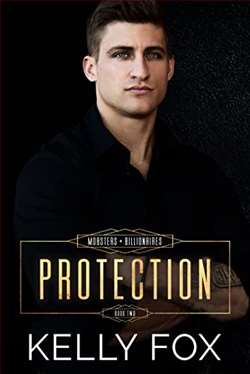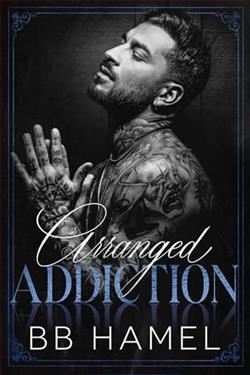Page 92 of Just One Look
Luka didn’t see much, but he knew that he was getting a bad feeling. “Which means what, in English?”
“One of your cervical vertebrae, the C5, here, has slipped forward out of position and is protruding over the one below it. You also have a continuing loss of fluid from the disc, which reduces the cushioning available and further impinges on the nerve. That would explain the increased pain you’re experiencing.”
“Right. How long?”
“Pardon?” Nils asked.
“How long do I expect to be out?”
“Given the instability of your cervical spine,” Nils said, “I’d recommend a spinal fusion, C5 to C6. I’ve discussed my recommendation with the trainer already, and he agrees.”
Luka said, “That’s six months.” His head was so cold, it was like he’d stuck it in the fridge. He’d never been out more thanthreemonths, because he had congenitally strong bones and muscles that were congenitally easy to strengthen more. He’d fractured a finger or two from time to time, cracked some ribs, and broken his collarbone once or twice, and that was it. His ligaments and tendons were just as strong, too. No knee surgeries, and no shoulder surgeries, either.
You trained hard and got your body mechanics right so you didn’t get injured, and if you did? You healed. If you didn’t heal fast? No matter how talented you were and how much you wanted it, you were done.
Also, the timing was all wrong. If it had happened in October, maybe, but now?
“Probably six months or more, yes,” Nils said. “I also see a slight loss of normal curvature in your cervical spine that concerns me.” He pointed with the pencil again.
“What does that mean,” Luka asked, “other than that my spine’s taken a bit of a beating?”
“At this point,” Nils said, still dry as bleached bone, “continuing sporting activity at all could be contraindicated.”
He wasn’t ready to hear this.He wasn’t even close. The biggest challenge in the game, after your first five or six seasons, was mental, and mentally, he was fine. He could get up the morning after a hard match, watch film on next week’s opponents, and feel nothing but excited to get ready to play them, thirteen seasons into the professional game. He felt that way because he had to, but he did feel that way. Discipline and habit could get you through most things.
“No,” he said. “I’m fine. I’ve played every minute of every game for the past six months, bar last week. I had a bit of trouble with a disc, that’s all. Fix the pain, and you fix my problem. If there’s something else, explain it to me.” He swiveled his gaze to Elizabeth, who had flipped the chart shut. “No.Youexplain it to me.”
There was compassion in her eyes. He bloody hated compassion. She said, “We’re concerned about something called spear tackler’s spine.”
“I don’t spear tackle.”
“I know,” she said, though how could she? She answered that by saying, “Rugby doesn’t allow players to lead with their head during a tackle for this reason, and players at your skill level will obviously have good technique. That doesn’t mean their cervical vertebrae don’t sometimes become compressed anyway, especially after so many years of play. Fortunately, you don’t have all the conditions we would look for, but the repeated cervical traumas you’ve experienced over the past several years are concerning, and so is that loss of curvature.”
His career couldn’t be over. That wasn’t happening. He wasn’t ready. To go from playing rugby for the All Blacks to being a physio? What had he been thinking? What kind of random second career was that? Where was the challenge? He said, “I’ll get the fusion done after the season. For now, patch me up. Weekly injections until that disc heals. Whatever.”
Nils said, “I’m recommending that you have the surgery now. You have some instability here. There’s no guarantee that further contact won’t make it worse.”
Luka looked at Elizabeth again. “You read an article.”
“Pardon?” Nils asked.
“About sportsmen who needed surgery or didn’t. Giving criteria. You were reading it when I came to get you for perfume shopping.”
Nils said, “How interesting.” Norwegian humor, Luka guessed.
Elizabeth said, “I read that one, and I read another one, too. I’ll send you the link,” she said to Nils, and then to Luka, “A review of the research suggests that ACDF—minimally invasive cervical surgery—offers better outcomes for professional athletes, on average, than nonsurgical treatment, and allows a faster return to play. Which is why Dr. Larsen is recommending surgery. By the way, some athletes have returned to play faster than six months. Depending how long the season goes …”
“Six months more,” he said.
She raised her eyebrows. “Really. That’s a long time to put your body through this.”
He said, “I’ve noticed.” Narky, but who wouldn’t be?
Nils said, “There’s still the issue of the loss of curvature. We’ll want to revisit that. Sometimes, normal curvature can be restored after a period of recovery.”
“If not, though?” Luka asked.
“If not,” Nils said, “I’ll recommend that you retire.”















